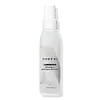What's inside
What's inside
 Key Ingredients
Key Ingredients

 Benefits
Benefits

 Concerns
Concerns

 Ingredients Side-by-side
Ingredients Side-by-side

Water
Skin ConditioningPropanediol
SolventGlycerin
HumectantPyrus Malus Fruit Extract
Skin ConditioningDipropylene Glycol
HumectantPolysilicone-29
Tocopherol
AntioxidantCocos Nucifera Fruit Water
Skin ConditioningPvp
Emulsion StabilisingPolysorbate 20
EmulsifyingEthylhexylglycerin
Skin ConditioningDisodium EDTA
BHT
AntioxidantGlycolic Acid
BufferingPhenoxyethanol
PreservativeCitric Acid
BufferingLeuconostoc/Radish Root Ferment Filtrate
AntimicrobialParfum
MaskingLinalool
PerfumingLimonene
PerfumingWater, Propanediol, Glycerin, Pyrus Malus Fruit Extract, Dipropylene Glycol, Polysilicone-29, Tocopherol, Cocos Nucifera Fruit Water, Pvp, Polysorbate 20, Ethylhexylglycerin, Disodium EDTA, BHT, Glycolic Acid, Phenoxyethanol, Citric Acid, Leuconostoc/Radish Root Ferment Filtrate, Parfum, Linalool, Limonene
Water
Skin ConditioningGlycerin
HumectantButylene Glycol
HumectantPropylene Glycol
HumectantCarica Papaya Fruit Extract
Skin ConditioningVitis Vinifera Seed Extract
AntimicrobialPanthenol
Skin ConditioningPhenoxyethanol
PreservativeTocopheryl Acetate
AntioxidantCucumis Sativus Fruit Water
Skin ConditioningDisodium EDTA
PEG-40 Hydrogenated Castor Oil
EmulsifyingPPG-26-Buteth-26
Skin ConditioningRosa Centifolia Flower Extract
AstringentEnantia Chlorantha Bark Extract
Skin ConditioningOleanolic Acid
Skin ConditioningPvp
Emulsion StabilisingIsododecane
EmollientTrimethylsiloxysilicate
EmollientPropanediol
SolventDecyl Glucoside
CleansingParfum
MaskingWater, Glycerin, Butylene Glycol, Propylene Glycol, Carica Papaya Fruit Extract, Vitis Vinifera Seed Extract, Panthenol, Phenoxyethanol, Tocopheryl Acetate, Cucumis Sativus Fruit Water, Disodium EDTA, PEG-40 Hydrogenated Castor Oil, PPG-26-Buteth-26, Rosa Centifolia Flower Extract, Enantia Chlorantha Bark Extract, Oleanolic Acid, Pvp, Isododecane, Trimethylsiloxysilicate, Propanediol, Decyl Glucoside, Parfum
 Reviews
Reviews

Ingredients Explained
These ingredients are found in both products.
Ingredients higher up in an ingredient list are typically present in a larger amount.
Disodium EDTA plays a role in making products more stable by aiding other preservatives.
It is a chelating agent, meaning it neutralizes metal ions that may be found in a product.
Disodium EDTA is a salt of edetic acid and is found to be safe in cosmetic ingredients.
Learn more about Disodium EDTAGlycerin is already naturally found in your skin. It helps moisturize and protect your skin.
A study from 2016 found glycerin to be more effective as a humectant than AHAs and hyaluronic acid.
As a humectant, it helps the skin stay hydrated by pulling moisture to your skin. The low molecular weight of glycerin allows it to pull moisture into the deeper layers of your skin.
Hydrated skin improves your skin barrier; Your skin barrier helps protect against irritants and bacteria.
Glycerin has also been found to have antimicrobial and antiviral properties. Due to these properties, glycerin is often used in wound and burn treatments.
In cosmetics, glycerin is usually derived from plants such as soybean or palm. However, it can also be sourced from animals, such as tallow or animal fat.
This ingredient is organic, colorless, odorless, and non-toxic.
Glycerin is the name for this ingredient in American English. British English uses Glycerol/Glycerine.
Learn more about GlycerinParfum is a catch-all term for an ingredient or more that is used to give a scent to products.
Also called "fragrance", this ingredient can be a blend of hundreds of chemicals or plant oils. This means every product with "fragrance" or "parfum" in the ingredients list is a different mixture.
For instance, Habanolide is a proprietary trade name for a specific aroma chemical. When used as a fragrance ingredient in cosmetics, most aroma chemicals fall under the broad labeling category of “FRAGRANCE” or “PARFUM” according to EU and US regulations.
The term 'parfum' or 'fragrance' is not regulated in many countries. In many cases, it is up to the brand to define this term.
For instance, many brands choose to label themselves as "fragrance-free" because they are not using synthetic fragrances. However, their products may still contain ingredients such as essential oils that are considered a fragrance by INCI standards.
One example is Calendula flower extract. Calendula is an essential oil that still imparts a scent or 'fragrance'.
Depending on the blend, the ingredients in the mixture can cause allergies and sensitivities on the skin. Some ingredients that are known EU allergens include linalool and citronellol.
Parfum can also be used to mask or cover an unpleasant scent.
The bottom line is: not all fragrances/parfum/ingredients are created equally. If you are worried about fragrances, we recommend taking a closer look at an ingredient. And of course, we always recommend speaking with a professional.
Learn more about ParfumPhenoxyethanol is a preservative that has germicide, antimicrobial, and aromatic properties. Studies show that phenoxyethanol can prevent microbial growth. By itself, it has a scent that is similar to that of a rose.
It's often used in formulations along with Caprylyl Glycol to preserve the shelf life of products.
Propanediol is an all-star ingredient. It softens, hydrates, and smooths the skin.
It’s often used to:
Propanediol is not likely to cause sensitivity and considered safe to use. It is derived from corn or petroleum with a clear color and no scent.
Learn more about PropanediolPvp is a water-soluble synthetic polymer and common hairstyling ingredient. It is a film-forming ingredient and used to "hold" specific shapes of hair.
Pvp is less effective in high-humidity. It tends to draw moisture, but this moisture dismantles the structure and "hold".
Water. It's the most common cosmetic ingredient of all. You'll usually see it at the top of ingredient lists, meaning that it makes up the largest part of the product.
So why is it so popular? Water most often acts as a solvent - this means that it helps dissolve other ingredients into the formulation.
You'll also recognize water as that liquid we all need to stay alive. If you see this, drink a glass of water. Stay hydrated!
Learn more about Water